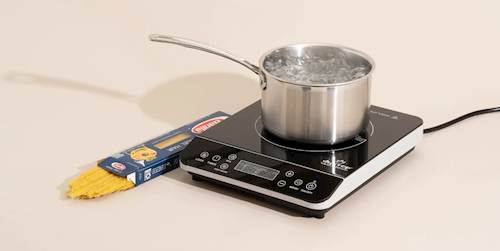

Most people are used to their cooking routine— gather the ingredients, prep the food, and hear the gas stove start to click as they light it. I myself am used to this convention, usually fiddling with the gas stove until my food suddenly turns out burnt and I have to turn down the heat. I remember my parents first teaching me how to use our gas stove, ensuring I turned the knob all the way so that I lit the gas instead of leaving it leaking.
Concerns have been steadily growing around the use of gas stoves, which significantly impact air quality in your home. The increased and prolonged exposure to gas from your stove over time can cause damage to the health of you and those in your home. Studies have shown that one in eight cases of asthma in children can be traced back to the presence of a gas stove. Literature identifying this correlation is not new, either; findings dating back to the 1980s have raised scientifically-backed concern over the health risks posed by gas stoves.
And the impact doesn’t stop in your home. Gas stoves are also a climate issue. The gasses released from traditional gas stoves are not only released when cooking, but are constantly leaking out (in fact, more than 75% of methane emissions are released while the stove is off). This constant flow of natural gas causes real environmental damage because the US has traditionally heavily relied on these stoves. In fact, the methane from gas stoves in the United States has the same environmental impact as half a million gas-powered cars.
Making the Switch
Fortunately, we have a solution readily available. Induction stoves provide the opportunity for reducing these impacts while improving the quality of your cooking. In fact, induction offers a better option, with quicker cooking times and energy efficiency. Because an induction stove transfers heat directly to your pots and pans through induction, it provides more powerful and efficient cooking potential.
As someone who can grow impatient when the water for my pasta is taking too long to boil, the fact that induction stoves can cook your food 50% faster is very appealing to me. Although I may be an amateur cook, cooking my pasta and adding premade sauce, chefs cooking the most elaborate meals agree that induction stoves provide a better alternative.
Pro and amateur chefs nationwide and in Dane County are making the switch to induction stoves. Chef Tu David Pho, an Oakland, California chef who competed on Top Chef, commends moving away from gas as an efficient way to cook quality food, saying it is the best way to sear meat. Locally, Erinn Monroe-Nye, a local mom and energy expert, can be found on the go in and out of Dane County toting her induction cooktop. “We love our induction cooktop. And you’re right it’s super easy to plug in anywhere… like a park shelter or anywhere outside with access to an outlet. I also like that the unit doesn’t get too hot (only the cookware does) so it’s less of a burn hazard.” Solo chefs and families alike can take advantage of the sustainable convenience offered by induction.
Incentives Coming in 2024
If you’re thinking about making the switch, there’s good news. The federal Inflation Reduction Act (IRA) includes funding to help low and moderate income households replace gas stoves. These grants will be available sometime in mid 2024 through Focus on Energy. Under this IRA program, households with an income that is 80% or less of the area median income will qualify for a grant covering up to 100% of a new induction stove or $840, whichever is less. Households with an income of 81% to 150% of the area median income can get a grant for up to 50% of the cost of the stove. Households with incomes above 150% of the area median income will not qualify for these grants. Details about this program are still being finalized but it is unlikely you will qualify for the grant if you purchase your stove before the program is officially available. 
And if you’re a renter, you can still make changes that make a difference. Simply ensuring ventilation in your kitchen can improve air quality. For example, using the stove vent or opening a window during the warmer months will prevent the gas from lingering indoors. Additionally, making smaller changes such as purchasing an electric kettle or a portable induction cooktop can provide your lungs— and the environment— relief. Some of these cooktops are available for under $100, and can most likely be used with pots and pans you already have in your kitchen. Investing in induction will also lower your energy bill by using about one third of the energy of a gas stove.
In the end, switching to an induction stove or cooktop could make that routine quicker, safer, and just as tasty! And quicker cooking times make for pasta that is ready sooner, so count me in!

A senior at UW-Madison studying education policy and public policy, Emma's love of nature and interest in encouraging equitable protection against climate change has brought her to an internship at the OECC.
The Dane County Office of Energy & Climate Change maintains this blog as a way to offer:
To be sure that you don't miss new blog entries, subscribe to our email updates.